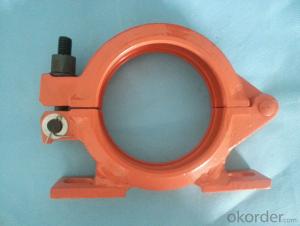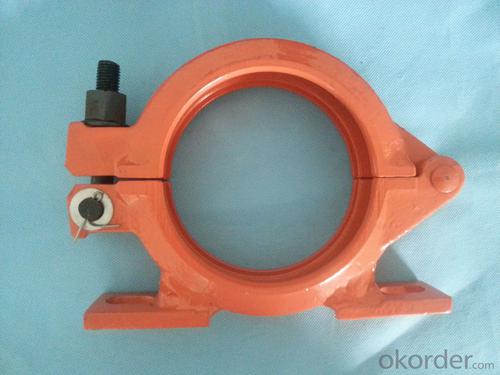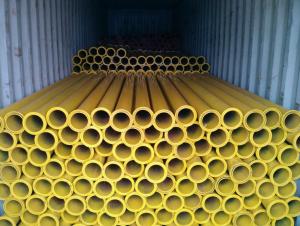Concrete Pump Bolt Mounting Clamp DN125 Forged
- Loading Port:
- China main port
- Payment Terms:
- TT OR LC
- Min Order Qty:
- 20 PCS
- Supply Capability:
- 1000 PCS/month
OKorder Service Pledge
OKorder Financial Service
You Might Also Like
Product Description:
A coupling is a device used to connect two delivery pieps together at their ends for the purpose of transmitting, and prevent the concrete from leaking. Couplings do not normally allow disconnection of shafts during operation.
Main Product Features:
1. use high quality steel. After high-temperature 1200 forging,it’s shaped.
2.High temperature forging.
3.convenient to use, easy operation,and high safety.
4.good sealing,wear-resising,longer service life.
5.do not restrict the steering tubes, pipes during the working process can be 360 degrees rotation.
6.used in concrete pump truck,concrete pump and pipeline connection seal in construction
work equipment.
Product Specifications:
1.Forged
2.2--8 inch
3.Galvanizing/Baking varnish
4.More durable,light,beautiful
Production steps:

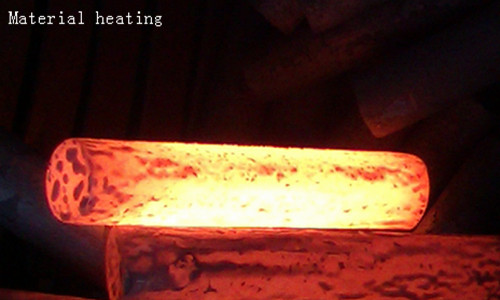
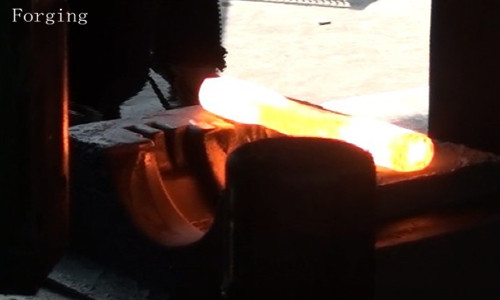
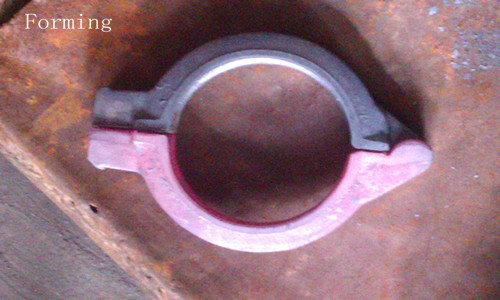
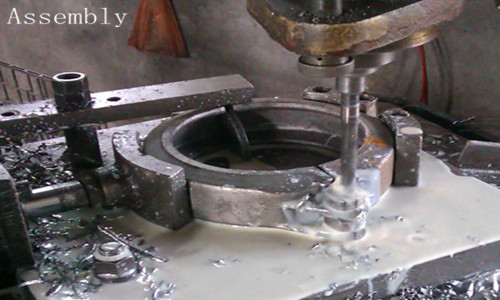
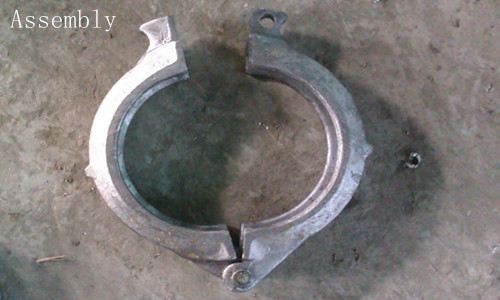
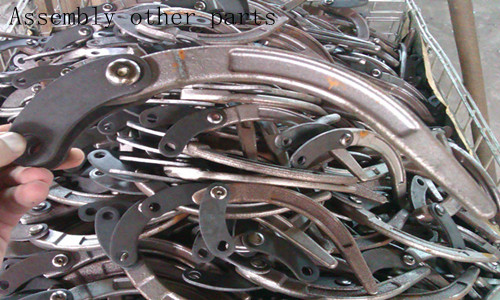
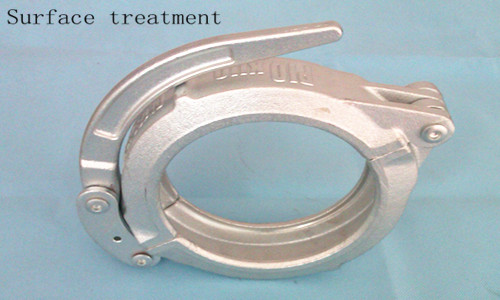
Concrete pump clamp Catalogue:
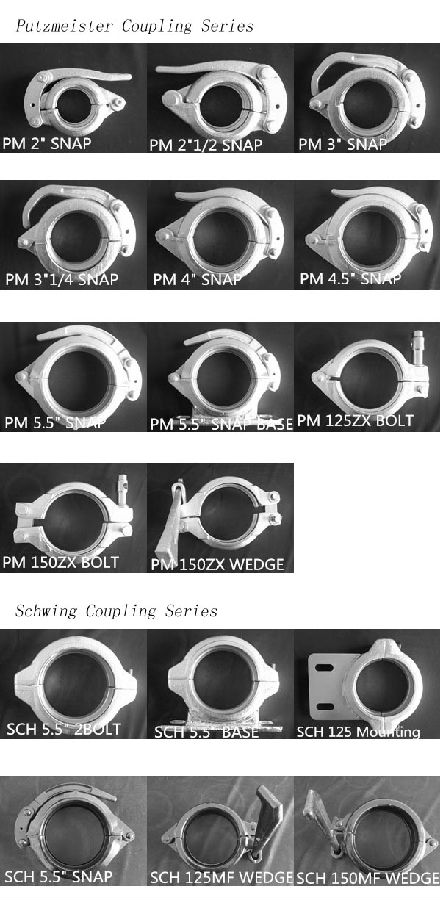
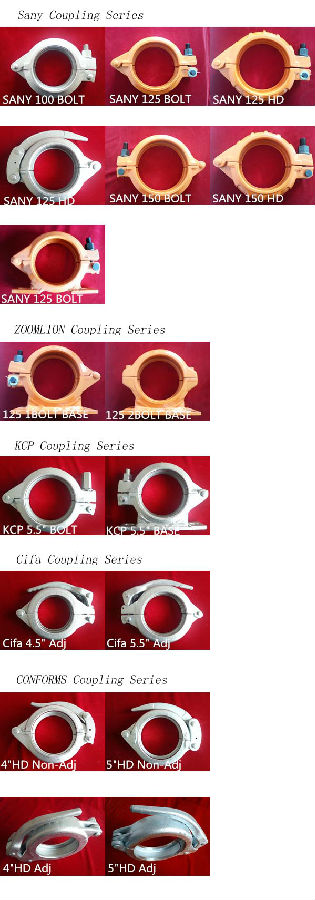
FAQ:
1.How do you regarding your product quality?
As our principle is more safety to save more. In China, there are lots of manufactures of this line, but we are the first one that use the forging technic in producing, firmly meet the PM standard.
2.Can I get some samples?
Of course you can. Small sample for free, but you pay the express. For some products are not small, like concrete pump pipe, it’s very difficult to deliver one pipe of 3000mm. If it’s possible, we’d like that you can come here to visit our factory. Welcome!
3. I want to make our logo on the products, is that ok?
Yes, it’s totally ok. OME is available from us.What you should do is send your logo, brand name, or picture to us. And let other things leave on us.
- Q: What are the potential risks of using non-standard or modified hydraulic components in concrete pump spare parts?
- There are several potential risks associated with using non-standard or modified hydraulic components in concrete pump spare parts. Firstly, these components may not have undergone the same rigorous testing and quality control as the original equipment manufacturer (OEM) parts. As a result, their performance and durability may be compromised, which can lead to potential failures or malfunctions. This, in turn, can cause accidents, injuries, or damage to the equipment or surrounding structures. Secondly, the use of non-standard or modified components may void the warranty of the concrete pump and its spare parts. Typically, manufacturers offer warranties to ensure the reliability and safety of their products. However, by using non-standard components, the warranty may become null and void. Consequently, the user will be responsible for any repairs or replacements needed due to issues arising from these non-standard parts. Another risk is the potential compatibility issues that may arise when using non-standard or modified components. Hydraulic systems rely on precise engineering and compatibility between various components to function optimally. Non-standard or modified parts may not fit properly or may have different specifications, resulting in leaks, pressure imbalances, or reduced overall performance. Furthermore, the use of non-standard or modified components can impact the overall efficiency and productivity of the concrete pump. OEM parts are specifically designed to work seamlessly with the rest of the system, ensuring smooth operation and maximum output. However, by using non-standard parts, the performance of the pump may be compromised, leading to increased downtime, decreased productivity, and higher maintenance costs. Lastly, the use of non-standard or modified components can also have legal and regulatory implications. Certain jurisdictions may have regulations or standards in place that require the use of OEM or certified parts for specific equipment, including concrete pumps. Failure to comply with these regulations can result in fines, penalties, or legal liabilities in the event of accidents or failures. In conclusion, the potential risks associated with using non-standard or modified hydraulic components in concrete pump spare parts include compromised performance and durability, warranty voidance, compatibility issues, reduced efficiency, and legal and regulatory implications. It is always advisable to use OEM or certified spare parts to ensure the safety, reliability, and optimal performance of the equipment.
- Q: How can one ensure proper functioning of concrete pump spare parts after installation?
- To guarantee the effective operation of concrete pump spare parts post-installation, several pivotal measures can be taken: 1. Quality Assurance: It is imperative to procure spare parts from reputable manufacturers or suppliers. Confirm that the spare parts are of superior quality, constructed from durable materials, and adhere to industry standards. This will significantly diminish the risk of malfunctioning components. 2. Proper Installation: It is crucial to adhere to the manufacturer's guidelines and recommendations regarding the installation of concrete pump spare parts. Each element should be installed accurately, with the appropriate torque and alignment. Seeking professional assistance if necessary is advisable to ensure proper installation. 3. Regular Maintenance: Consistent maintenance is vital for the effective operation of concrete pump spare parts. Establish a maintenance schedule and adhere to it diligently. This encompasses inspecting and cleaning the spare parts, checking for any indications of wear or damage, and lubricating moving parts as required. 4. Timely Replacement: Over time, concrete pump spare parts may deteriorate or sustain damage due to continuous usage. Monitoring the condition of the spare parts is crucial, and replacing them promptly when necessary is essential. Regularly inspecting the components and promptly replacing any worn-out or damaged parts will help maintain the proper functioning of the pump. 5. Training and Education: Ensuring that operators and maintenance personnel receive proper training and education is vital for the effective operation of concrete pump spare parts. They should be familiar with the equipment, its spare parts, and the correct procedures for installation and maintenance. Regular training sessions can enhance their knowledge and skills, resulting in better maintenance and performance of the spare parts. By adhering to these steps, one can ensure the proper functioning of concrete pump spare parts after installation, thereby enhancing the overall efficiency and longevity of the equipment.
- Q: Can concrete pump spare parts be painted or coated for increased durability?
- Yes, concrete pump spare parts can be painted or coated to increase their durability. The paint or coating acts as a protective layer, preventing corrosion and wear and tear, thus extending the lifespan of the spare parts.
- Q: How often should concrete pump seals be replaced?
- The frequency at which concrete pump seals should be replaced depends on several factors, including the type of pump, the quality of the seals, the operating conditions, and the maintenance practices. Generally, it is recommended to inspect and replace concrete pump seals every 500 to 1,000 pumping hours or annually, whichever comes first. Regular inspection is crucial to identify any signs of wear or damage in the seals. Common indications for replacement include leaks, excessive vibration, reduced pumping efficiency, or visible degradation of the seal material. If any of these issues are observed, it is essential to promptly replace the seals to prevent further damage and ensure the optimal functioning of the concrete pump. It is worth noting that certain pumps may require more frequent seal replacements due to their design or operating conditions. For example, high-pressure pumps or those used in abrasive environments might experience accelerated wear on the seals, necessitating more frequent replacements. To prolong the lifespan of concrete pump seals, proper maintenance and care are essential. This includes regular cleaning of the pump and seals, ensuring proper lubrication, and following the manufacturer's guidelines for operation and maintenance. Additionally, using high-quality seals and regularly inspecting them for signs of wear can help extend their longevity. Overall, the replacement frequency of concrete pump seals should be determined through a combination of regular inspections, adherence to maintenance practices, and consideration of the specific operating conditions.
- Q: How often should a hopper filter be cleaned or replaced?
- A hopper filter should ideally be cleaned or replaced every 3 to 6 months, depending on the usage and the level of contamination.
- Q: What are some common issues with concrete pump pipes and how can they be prevented?
- Concrete pump pipes can experience several common issues, including blockages, leaks, and wear and tear. These problems can be avoided by implementing appropriate maintenance and operational practices. 1. Blockages: Concrete hardening inside the pipe can obstruct the flow, resulting in blockages. Regularly cleaning the pipes after each use is crucial to prevent blockages. Flushing the pipes with water or using a high-pressure air hose can eliminate any remaining material and prevent buildup. Furthermore, using concrete mixtures with the correct consistency and avoiding excessive use of additives can minimize the chances of blockages. 2. Leaks: Cracks or gaps in the pipe can cause concrete to leak out. Regularly inspecting the pipes is vital to detect any signs of damage or wear. Promptly repairing or replacing damaged sections can prevent leaks. It is also essential to use high-quality pipes that resist abrasion and chemical corrosion as they are less likely to develop leaks. 3. Wear and Tear: The operation of concrete pump pipes exposes them to significant stress and abrasion. This can eventually lead to wear and tear, resulting in weakened pipes or even breakages. To prevent excessive wear, it is important to utilize pipes made from durable materials like hardened steel or composite materials. Regularly inspecting the pipes for signs of wear, such as thinning or deformation, and replacing them as needed can help prevent sudden failures. 4. Pipe movement and alignment issues: During operation, concrete pump pipes may shift or become misaligned, which can decrease efficiency and potentially cause damage. To prevent this, ensure that the pipes are securely fastened to the pump and properly aligned. Using clamps and brackets or employing anti-vibration measures can help maintain the stability and alignment of the pipes during pumping operations. 5. Operator errors: Improper handling and operation can also contribute to problems with concrete pump pipes. Operators should receive adequate training in pump operation and pipe handling. Following recommended operating procedures, avoiding excessive pressure or flow rates, and exercising caution while maneuvering the pipes can prevent unnecessary strain and damage. In conclusion, proactive maintenance, proper handling, and the use of high-quality pipes can greatly reduce common issues with concrete pump pipes, ensuring smooth and efficient concrete pumping operations.
- Q: How often should hopper cylinder seals be replaced in a concrete pump?
- The frequency at which hopper cylinder seals should be replaced in a concrete pump depends on several factors such as the quality of the seals, the intensity of usage, and the maintenance practices followed. Ideally, hopper cylinder seals should be inspected regularly for any signs of wear and tear or damage. If there are visible cracks, tears, or leaks, it is recommended to replace the seals as soon as possible to prevent any further damage to the concrete pump. In general, hopper cylinder seals can last anywhere from several months to a couple of years, depending on the aforementioned factors. However, it is essential to establish a preventive maintenance plan and regularly monitor the condition of the seals to ensure optimal performance and minimize downtime. Additionally, it is advisable to consult the manufacturer's guidelines or seek advice from a professional concrete pump technician to determine the specific replacement interval for hopper cylinder seals based on the pump model, usage patterns, and environmental conditions.
- Q: How do I properly adjust and control flow rates in concrete pump spare parts?
- To properly adjust and control flow rates in concrete pump spare parts, there are a few key steps to follow: 1. Understand the equipment: Familiarize yourself with the specific concrete pump spare parts you are working with. Read the user manual and refer to any documentation provided by the manufacturer. This will help you gain a comprehensive understanding of the equipment's capabilities and how to adjust flow rates effectively. 2. Check the pump settings: Before starting any concrete pumping operation, ensure that the pump settings are properly configured. This includes checking the hydraulic pressure, engine RPM, and any other relevant settings. Make sure all valves and controls are in the correct position for the desired flow rate. 3. Monitor the pump speed: The speed of the pump directly affects the flow rate of the concrete. Different concrete mixtures may require different pump speeds to achieve the desired flow rate. Adjust the engine RPM accordingly, referring to the manufacturer's recommendations and any specific requirements for the project. 4. Adjust the pump stroke: Most concrete pumps have adjustable pump strokes to control the flow rate. By changing the length of the stroke, you can increase or decrease the volume of concrete being pumped. Experiment with different stroke lengths to find the optimal flow rate for your specific application. 5. Use the control panel: Many concrete pumps come equipped with a control panel that allows for precise adjustment of flow rates. Take advantage of these features to fine-tune the flow rate. Use the control panel to monitor the pump's performance and make any necessary adjustments to maintain a consistent flow. 6. Regularly inspect and maintain the equipment: Proper maintenance is crucial to ensure the accurate adjustment and control of flow rates. Regularly inspect the concrete pump spare parts for any signs of wear or damage. Clean and lubricate the components as recommended by the manufacturer. A well-maintained pump will operate more efficiently and provide more accurate control over flow rates. By following these steps, you can properly adjust and control flow rates in concrete pump spare parts. Remember to always prioritize safety and consult the manufacturer's instructions and guidelines for specific recommendations and considerations.
- Q: How often should hydraulic cylinders be inspected or replaced in a concrete pump?
- Hydraulic cylinders in a concrete pump should be inspected regularly, ideally every 6 to 12 months, to ensure their proper functioning. Replacement of hydraulic cylinders should be done only when necessary, such as in cases of significant wear and tear, severe damage, or if they fail to meet safety standards.
- Q: What are the common causes of overheating in concrete pump spare parts?
- The common causes of overheating in concrete pump spare parts can be attributed to factors such as high ambient temperatures, inadequate lubrication, excessive load or pressure, worn-out or damaged components, and insufficient cooling systems.
Send your message to us
Concrete Pump Bolt Mounting Clamp DN125 Forged
- Loading Port:
- China main port
- Payment Terms:
- TT OR LC
- Min Order Qty:
- 20 PCS
- Supply Capability:
- 1000 PCS/month
OKorder Service Pledge
OKorder Financial Service
Similar products
Hot products
Hot Searches
Related keywords
